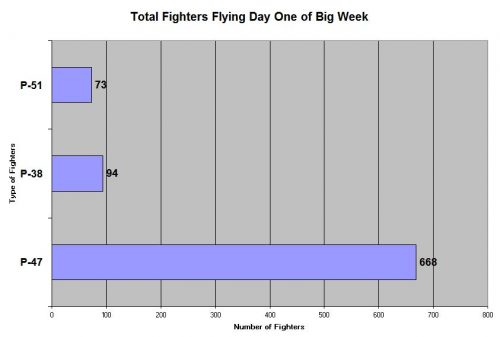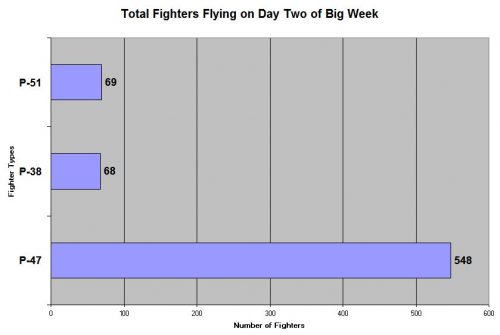Today marks the 75th Anniversary of the second day of Operation Argument otherwise known as BIG WEEK. On Monday, February 21, 1944 the 8th Air Force went after the Luftwaffe in the skies over Germany for a second day to take air superiority for the Normandy invasion in June 1944.
These were the results of the 2nd day of combat —

Mission 228: 3 areas in Germany are targeted with the loss of 16 bombers and 5 fighters:
.
- 336 B-17s are dispatched to the Gütersloh, Lippstadt and Werl Airfields; because of thick overcast, 285 hit Achmer, Hopsten, Rheine, Diepholz, Quakenbrück and Bramsche Airfields and the marshaling yards at Coevorden and Lingen; they claim 12-5-8 Luftwaffe aircraft; 8 B-17s are lost, 3 damaged beyond repair and 63 damaged; casualties are 4 KIA, 13 WIA and 75 MIA.
- 281 B-17s are dispatched to Diepholz Airfield and Brunswick; 175 hit the primaries and 88 hit Ahlhorn and Vörden Airfields and Hannover; they claim 2-5-2 Luftwaffe aircraft; five B-17s are lost, three damaged beyond repair and 36 damaged; casualties are 20 KIA, 4 WIA and 57 MIA.
- 244 B-24s are dispatched to Achmer and Handorf Airfields; 11 hit Achmer Airfield and 203 hit Diepholz, Verden and Hesepe Airfields and Lingen; they claim 5-6-4 Luftwaffe aircraft; 3 B-24s are lost, 1 damaged beyond repair and 6 damaged; casualties are three WIA and 31 MIA.
,
Escort for Mission 228 is provided by 69 P-38s, 542 Eighth and Ninth Air Force P-47s and 68 Eighth and Ninth Air Force P-51s; the P-38s claim 0-1-0 Luftwaffe aircraft, 1 P-38 is damaged beyond repair; the P-47s claim 19-3-14 Luftwaffe aircraft, two P-47s are lost, two are damaged beyond repair, three are damaged and two pilots are MIA; the P-51s claim 14-1-4 Luftwaffe aircraft, three P-51s are lost and the pilots are MIA. German losses were 30 Bf 109s and Fw 190s, 24 pilots killed and seven wounded.[12]
,
Mission 229: 5 of 5 B-17s drop 250 bundles of leaflets on Rouen, Caen, Paris and Amiens, France at 22152327 hours without loss.
For extensive background, see this Wikipedia article, where the passage above came from:
https://en.wikipedia.org/wiki/Big_Week
The USAAF Strategy of Big Week
Operation Argument marked a massive strategic change in how the Bomber Generals fought the air war. Previously the idea was that large formations of self-escorting heavy bomber would strike the key parts of the German “industrial web” with “precision bombing” and collapse it’s economy. This “win air superiority through industrial collapse” theory quite literally went down in flames on 14 October 1943 when the second Schweinfurt raid lost 60 bombers, while failing to destroy the German ball bearing industry.
Big Week abandoned this pre-war doctrine. Generals Carl Spaatz and Fred Anderson, respectively commander and chief of operations of United States Strategic Air Forces in Europe, and William Kepner, Eighth Air Force fighter commander decided to fight a different war, a war of attrition, aimed at the German fighter force. The heavy bombers were sent against the German aviation industry, not because they could destroy it — it would be great if they did — but because it was a target that the Luftwaffe had to defend.
Rather than being the single and only war winning super-weapon, the Heavy bomber was demoted to the role of a staked goat. The bomber streams of B-17 and B-24 were bait for the Luftwaffe fighter force to come up into the guns of American escort fighters.
This is how Stephen L. McFarland’s 1997 USAFA Harmon Memorial Lecture #40 “Battles Not Fought: The Creation of an Independent Air Force” described this strategy:
…Their plan was to use B-17s and B-24s as bait. By being over Germany doing damage to critical industries, the bombers would serve as bait to attract German fighters so that American fighters could shoot them down. It was a major gamble because in the fall of 1943 the Luftwaffe had truly bloodied Eighth Air Force. Eighth Air Force lost sixty bombers over Schweinfurt on October 14,1943, and eighty-eight more bombers on three other missions that same week.13
.
By the spring of 1944 the situation had changed. Dozens of fresh American bomber and fighter groups had arrived from the States. P-47 Thunderbolt and P-51 Mustang long-range fighters with drop tanks could now carry the battle for air superiority into Germany and beyond. Refined tactics placed them where they could wreak an increasing toll on German fighter defenses. A refined strategy made these German fighter defenses the primary target for destruction. A new leadership, including Spaatz, Anderson, and Kepner, understood the importance of winning air superiority to permit the invasion and a continuation of the bombing offensive against Germany without heavy losses. This new leadership believed that the Luftwaffe could be made to use up all its resources trying to stop the bombers. Attrition of the Luftwaffe over Germany would bring air superiority over Normandy..
Spaatz and Anderson wanted to stop using tricks and feints to get the bombers to their targets. They knew from experience that Eighth Air Force could confuse the Luftwaffe to limit its ability to concentrate intercepting fighters near the bomber streams. Such feints reduced American losses, but also reduced German losses. If the Germans could not find the bombers, they would not be there to be shot down. The American commanders therefore ordered the bomber units to fly to their targets. There would be no feints. Spaatz wanted to make sure the Luftwaffe would know where the bombers would be on a given day so that the Luftwaffe would come up in large numbers to fight and be wounded if not killed.14.
Kepner, the fighter commander, realized that even then the Germans would try to limit their losses so that they could live to fight another day. His contribution was what he called “air guerilla warfare.” He ordered his fighter pilots to escort American bombers to their targets at 30,000 feet as before, but to return to England on the deck. If the Luftwaffe would not come up and fight, he would go down and get them, strafing the wolf in its lair. When cloud cover kept the bombers in England, he would send his fighters into Germany below the cloud cover, strafing anything that could contribute to the war effort. Strategic bombing had previously meant dropping bombs from high altitude. Kepner wanted to achieve similar results by having fighters shoot bullets from tree-top level. Pilots received kill credits for aircraft destroyed on the ground. They brought “home pieces of trees from Germany as souvenirs.” Mission reports told the tale: “I claim three Ju-52s,” “I claim three locomotives,” and even “I claim 25 cows.”15.
Spaatz, Anderson, and Kepner sent their aircraft into Germany, day after day, engaging in a battle of attrition, reminiscent of those fought around Petersburg in the Civil War and Verdun in World War I. February 20 through 25,1944, they went after Germany’s aircraft production in the Big Week missions. Bombing results were good, but did not stop German production- it continued to rise at an alarming rate. Losses were heavy (Eighth Air Force lost 269 aircraft), but the Luftwaffe also bled (282 aircraft written off).
America’s Materialschlacht Escort Fighter
What Generals Spaatz, Anderson, and Kepner were doing was engaging the Luftwaffe in a war of attrition they could not win. The Germans had faced this kind of thing in World War 1 starting 1 July 1916 in Northern France at the battle of the Somme. They so impressed by this that the Imperial German military invented a new guttural sounding word to describe it — Materialschlacht — which very roughly translates as “Battle of Material” in English.
The American fighter that inflicted most of these Materialschlacht attrition losses in Big Week wasn’t the P-51 Mustang. Don’t get me wrong, the Merlin engine powered Mustang’s were some of the truly outstanding fighters of WW2, but in Big Week the “P-51 Mustang Narrative” did not apply.
There simply were not enough P-51’s to do the job of escorting the bombers. See these following bar charts:


The plane that killed the German aces in Big Week was the P-47. This was simply a matter of numbers, because for every P-38 Lightning and P-51 Mustang -COMBINED- in Big Week. There were FOUR P-47 Thunderbolts.
Truly it can be said that the P-47 was the Materialschlacht escort fighter of the strategic bombing campaign.
-End-
What happened to my comment ? Wrong thread ?
Mike, there are two posts of “Big Week”
Attrition almost always shows up as not merely a feature, but an element of war. Something akin to the idea that victory belongs to those who can waste the most.
There are now three Big Week posts.
A new one went up this morning.